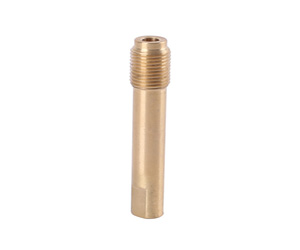When starting medical machining, the operator should adjust the feed speed to a very small value, execute in a single block, concentrate on positioning, dropping the tool, and inserting the tool quickly. Put the hand on the stop button and stop immediately if there is a problem, pay attention to the direction of the tool movement. To ensure safe feed, then slowly increase the feed speed to a suitable level, and at the same time add coolant or cold air to the tool and the workpiece.
Do not leave the control panel too far away from the control panel when roughing, and stop the machine for inspection if there is any abnormality. Pull the meter again after roughing, to make sure that the workpiece is not loose. If there is, it must be re-calibrated and touched. Continuously optimize processing parameters during processing to achieve better processing results.
After CNC machining of the workpiece, the main dimensions of the workpiece should be measured whether it is consistent with the requirements of the drawing. If there is any problem, immediately notify the team leader or programmer to check and solve it. After passing the self-inspection, it can be removed and must be sent to the inspector for special inspection. Common types of CNC parts processing are as follows:
1. Hole processing: Before drilling on the numerical control, you must first use a center drill to locate, then use a drill that is 0.5~2mm smaller than the size of the drawing, and use a suitable drill for finishing.
- Reaming processing: When reaming the workpiece, you must first use a center drill to locate, then use a drill that is 0.5~0.3mm smaller than the drawing size to drill, and then use a reamer to ream. When reaming, pay attention to controlling the spindle speed. Within 70~180rpm/min.
- Boring processing: For CNC turning boring of the workpiece, first use a center drill to locate, then use a drill 1~2mm smaller than the drawing size to drill, and then use a rough boring cutter (or milling cutter) to process until only a single is left. The machining allowance for the side is about 0.3mm, and then use the fine boring tool with the pre-adjusted size for fine boring, and then the fine boring allowance should not be less than 0.1mm.
4. Direct numerical control (DNC) operation: before DNC numerical control processing, the workpiece should be clamped, the zero position should be set, and the parameters should be set. Open the processing program to be transferred in the computer to check, then let the computer enter the DNC state, and enter the file name of the correct processing program. Press the TAPE key and the program start key on the processing machine tool, and then the machine tool controller will flash with the word LSK. Press the enter keyboard on the computer to perform DNC data transmission processing.
In the process of cnc machining parts, workpiece clamping is also a problem that must be paid attention to. How to do the workpiece clamping step in the machining process?
Before the workpiece is clamped, the surfaces must be cleaned. There should be no oil, iron filings and dust. Use a file (or oilstone) to remove the burrs on the surface of the workpiece.
The high-speed rail used for clamping must be smoothed by a grinder to make it smooth and flat. The code iron and nut must be sturdy and able to clamp the workpiece reliably. For small workpieces that are difficult to clamp, they can be directly clamped on the vise; the machine tool table should be clean and free of iron filings, dust, and oil; the shim is generally Place it on the four corners of the workpiece, and for the workpiece with too large span, it is necessary to add a contour shim in the middle.
According to the size of the drawing, use a caliper to check whether the length, width, and height of the workpiece are qualified.
Please contact us immediately, we can provide you with all plastic machining service.
When clamping the workpiece, according to the clamping and placement method of the programming operation guide, consider avoiding the processed part and the situation where the tool head may touch the fixture during processing.
After the workpiece is placed on the horn, the reference plane of the workpiece must be drawn according to the requirements of the drawing, and the verticality of the workpiece that has been ground on all six sides must be checked.
After the workpiece is pulled, the nut must be tightened to prevent the workpiece from being displaced during processing due to the unstable clamping; pull the table again to make sure that the error is not out of tolerance after clamping.
